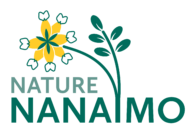Biography:
Bill Beese is currently an honorary Research Associate at VIU, having taught as a professor in the Forestry Dept at VIU for 11 years. Before joining the VIU faculty, Bill spent over 30 years on the BC Coast as a Forest Ecologist in research and policy development for several forest companies. Bill is internationally recognized for practical implementation of innovative forestry, in particular his landmark work implementing retention silviculture systems, in which trees are left to maintain biodiversity over the long term. This work on variable retention as an alternative to clear-cut harvesting was a team effort that received the Corporate Award from the Ecological Society of America.
Bill has served on numerous advisory committees on research, old growth forests and ecosystem-based management including an international science panel for Forestry Tasmania. He is a co-author of three book chapters and numerous research papers. Among the many awards and recognitions Bill has received, he most recently (2020) was awarded the Canadian Forestry Scientific Achievement Award from the Canadian Institute of Forestry, recognizing “individuals who have made innovative and outstanding achievements in forestry research in Canada.”
Talk Background:
The coastal temperate rainforests of British Columbia (BC) are dominated by old-growth forests. However, few studies have documented the age of specific areas or forest stands, or trees in BC’s old growth in detail. Knowledge of the historical development of these original forests and their characteristics and variability over the landscape can inform ecosystem-based approaches to forest management and conservation. Tree age is only one attribute of old growth, yet it is important for both defining and understanding these forests. The key question addressed by this study was: What is the age of trees in old-growth forests on Vancouver Island? Most of the data on the age of old growth in BC exists in unpublished inventories, ecological classification databases and graduate theses. We assembled data on individual tree age, height, and diameter, and on growing sites for 1,114 plots and 4,033 individual trees. We looked for trends by species and landscape features. We also characterized the age structure within old forests for selected areas with detailed stand data. Trees in main canopy of old-growth forests on Vancouver Island were 150 to 450 years old. The frequency of trees over 350 years old diminished rapidly, with trees over 850 uncommon. We noted higher median stand ages in higher elevation forest types and in areas with less frequent fire and windthrow. Many stands in these coastal temperate rainforests can be considered “all-aged,” having a wide range of ages represented within the main canopy and veteran trees. The actual time since major disturbance is much greater than the stand age indicates, suggesting an important distinction between the age of a forest and the age of the trees within it. The major conifer species on Vancouver Island can be ranked from longest-lived to shortest-lived in the following order: yellow-cedar, western redcedar, mountain hemlock, Douglas-fir, western hemlock, amabilis fir, Sitka spruce, and lodgepole pine. These findings help improve our understanding of old-growth dynamics, particularly in relation to large- and small-scale disturbances and successional development.
